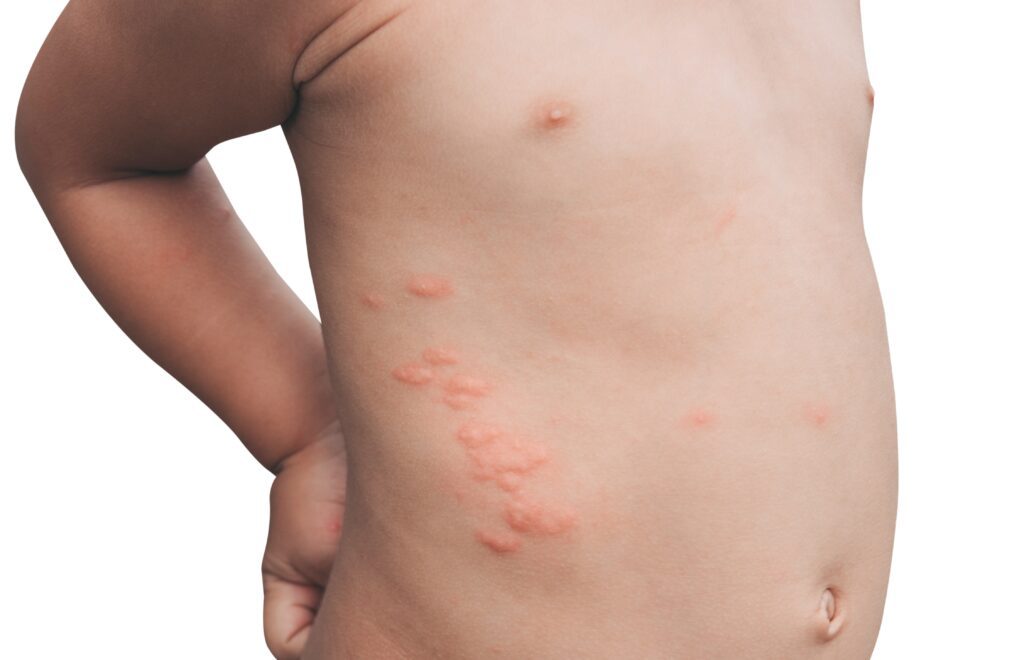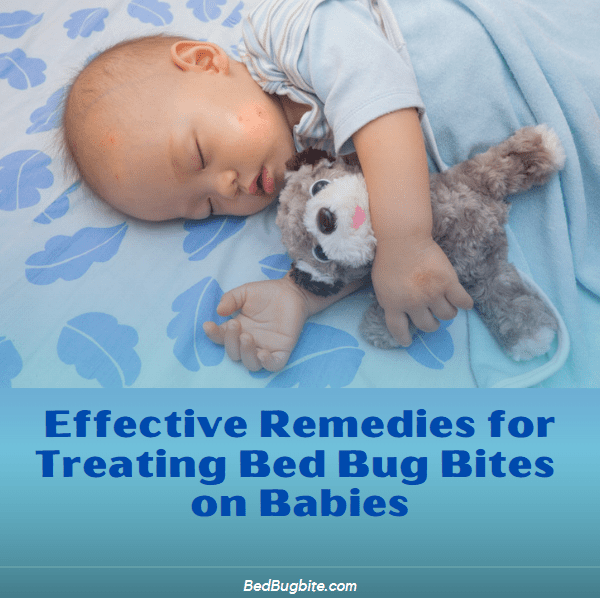Introduction
Welcome to our comprehensive guide on addressing bed bug bites on babies, a concern that many parents face with distress. Bed bugs, tiny yet troubling, can significantly impact the health and comfort of our little ones. In this guide, we prioritize remedies that are not only effective but also safe for infants’ sensitive skin. Understanding the urgency of treating these bites carefully, we provide tried and tested solutions that soothe and protect. As we embark on this journey together, remember that the right knowledge and actions can shield your baby from the discomfort of bed bug bites and prevent future occurrences. For further information, the Centers for Disease Control and Prevention (CDC) offers detailed insights into bed bug appearances and behaviors, which can be found here.
This introduction sets the stage for a deep dive into identifying, treating, and ultimately preventing bed bug bites on babies. Stay tuned as we explore each step in detail, ensuring your little one stays happy and bite-free. …Click Here Now to Read More on Bed Bugs.
Understanding Bed Bug Bites
Bed bug bites are often mistaken for other insect bites, yet they possess distinctive characteristics crucial for identification. Typically, these bites appear as small, red, and sometimes clustered spots on the skin, which may develop into raised welts. It’s essential to recognize these signs early. Especially in sensitive individuals like babies, who may experience more pronounced symptoms such as swelling, redness, or even a rash.
Symptoms of Bed Bug Bites in Babies

- Immediate reaction: Babies might show a quicker response to bites, with symptoms ranging from tiny red bumps to larger welts.
- Discomfort levels: Unlike adults, babies may become particularly fussy or irritable due to the itching and discomfort caused by the bites.
- Potential for allergic reactions: In rare cases, some infants might exhibit allergic reactions to bed bug bites, necessitating prompt medical attention.
For a detailed understanding of how bed bug bites differ from other common insect bites. The American Academy of Dermatology provides a useful comparison here.
By accurately identifying bed bug bites on your baby, you can take immediate and effective steps to alleviate their discomfort and prevent further bites. Understanding these symptoms is the first crucial step towards ensuring your baby’s skin remains healthy and free from bed bug-induced irritation.
Immediate Actions to Soothe Bites
Upon discovering bed bug bites on your baby, immediate and gentle care is paramount. The first step involves safely cleaning the affected area with mild soap and lukewarm water. This simple act helps prevent infection and begins the soothing process. Following cleaning, it’s crucial to apply suitable skincare products that are formulated for infants and can alleviate itching and irritation. Treating Bed Bug Bites on Babies.
Safe Anti-Itch Creams and Lotions for Babies
- Calamine lotion: Known for its calming properties, calamine lotion can be gently applied to soothe itching.
- Hydrocortisone cream: A mild hydrocortisone cream may be used sparingly under pediatric guidance to reduce inflammation.
Home Remedies to Alleviate Symptoms
- Cold compress: Applying a cold compress can provide immediate relief from itching and swelling.
- Oatmeal bath: A lukewarm oatmeal bath can soothe irritated skin and is safe for babies.
Parents should consult with a pediatrician before applying any new products to their baby’s skin. Especially if the baby shows signs of a severe reaction or if the bites appear infected. The Mayo Clinic offers further guidance on treating insect bites in children, which can be accessed here.
By carefully following these steps, you can effectively manage your baby’s bed bug bites. Ensuring their skin heals quickly and remains as comfortable as possible.
Medical Treatment Options
When bed bug bites on babies escalate beyond mild irritation, seeking medical treatment becomes essential. Recognizing the signs of a severe reaction or potential infection can guide parents on when to consult a healthcare provider. Symptoms such as excessive swelling, fever, or pus indicate that professional medical intervention is necessary.
Medical Treatment Options
- Topical corticosteroids: For severe itching and swelling, a doctor may prescribe a stronger corticosteroid than is available over the counter.
- Antihistamines: If a baby shows signs of an allergic reaction, oral antihistamines might be recommended to alleviate symptoms.
When to See a Doctor
- Persistent symptoms: If symptoms persist despite home treatment, or if bites multiply, a visit to the pediatrician is warranted.
- Signs of infection: Redness spreading from the bite site, increased warmth, or fever can be signs of a secondary infection requiring prompt medical care.
The American Academy of Pediatrics provides valuable insights on how to deal with insect bites and when to seek medical attention, available here.
By understanding these treatment options and knowing when to seek help, parents can ensure their baby receives the necessary care to deal with bed bug bites effectively. This proactive approach helps prevent complications and promotes the well-being of the child. Treating Bed Bug Bites on Babies.
Preventing Future Bites in Babies
Preventing future bed bug bites is crucial, especially in environments where infants are present. Implementing preventive measures in the nursery and regularly inspecting baby-related items can significantly reduce the risk of bed bug infestations. Ensuring your baby’s surroundings are free from bed bugs involves both vigilance and proactive strategies.
Tips for Baby-Safe Bed Bug Prevention in the Nursery
- Regular inspections: Check cribs, bedding, and nearby furniture for signs of bed bugs or their eggs.
- Protective coverings: Use bed bug-proof mattress covers to prevent bed bugs from inhabiting mattresses and pillows.
Inspecting Baby Clothing, Toys, and Furniture
- Routine checks: Regularly examine baby clothes, toys, and furniture for any traces of bed bugs.
- Laundry practices: Wash and dry baby clothing and bedding at high temperatures to kill any bed bugs.
The Environmental Protection Agency (EPA) offers a comprehensive guide on how to prevent and treat bed bug infestations, accessible here.
By adhering to these preventive measures, parents can create a safer, more secure environment for their babies, minimizing the risk of bed bug bites and promoting a healthier living space. These steps not only protect the infant but also contribute to the overall hygiene and bug-resistance of the home.
Long-term Strategies to Manage Bed Bugs in Your Home
Managing bed bugs in your home requires a strategic approach, especially when the safety of babies is a priority. Identifying and eliminating bed bug infestations not only involves thorough inspection and treatment but also understanding the best methods suited for environments with infants. Opting between professional extermination and do-it-yourself solutions should be carefully considered to ensure effectiveness while maintaining a safe space for your baby.
Step-by-Step Guide on How to Identify and Eliminate Bed Bug Infestations
- Identification: Learn to recognize bed bugs and their signs, such as small rust-colored spots on bedding or sweet musty odors.
- Regular cleaning: Vacuum regularly and steam-clean carpets and furniture to remove bed bugs and their eggs.
Professional Extermination vs. DIY Solutions
- Professional services: Consider hiring a licensed pest control professional who can use more effective and baby-safe methods.
- DIY treatments: If opting for DIY, use non-toxic treatments approved for use in homes with babies and follow all instructions meticulously.
The National Pest Management Association provides additional resources and guidance on choosing the right extermination methods, available here.
By carefully implementing these long-term strategies, you can significantly reduce the presence of bed bugs in your home and protect your family from future infestations. This proactive approach not only addresses immediate concerns but also helps maintain a healthy, bed bug-free environment for your baby and the whole family. Treating Bed Bug Bites on Babies.
Myths vs. Facts About Bed Bugs
Educating yourself about bed bugs is just as important as eradicating them, especially when ensuring the safety of your family. There are many myths surrounding bed bugs that can mislead and complicate efforts to control them effectively. By distinguishing myths from facts, parents can better understand how to protect their homes and babies from these pests.
Myths vs. Facts About Bed Bugs
- Myth: Bed bugs transmit diseases.
- Fact: Scientific research, including studies from the Centers for Disease Control and Prevention (CDC), shows that bed bugs are not known to transmit diseases to humans.
- Myth: Bed bugs are only found in dirty places.
- Fact: Bed bugs can thrive in any environment as long as they have access to their food source: human blood.
- Myth: Bed bugs are too small to see with the naked eye.
- Fact: Adult bed bugs are about the size of an apple seed, visible to the naked eye.
For a deeper understanding of bed bug behavior and effective control strategies, refer to the comprehensive guide provided by the University of Kentucky’s Entomology Department here.
By debunking these common myths, we can approach bed bug prevention with the right knowledge and tools, ensuring our homes remain safe and secure for our children. This informed approach not only dispels fear but also equips us with practical measures to combat and prevent bed bug infestations effectively.
Conclusion
In conclusion, understanding how to treat and prevent bed bug bites on babies is essential for maintaining their comfort and health. From identifying symptoms and administering immediate care to adopting long-term preventive measures, every step plays a crucial role. We have explored safe treatments, key signs for medical attention, and effective strategies to safeguard your home against future infestations. By implementing these practices, you can create a secure environment that nurtures your baby’s well-being and keeps bed bugs at bay.
Additional Resources
- Further Reading: For comprehensive insights into bed bug biology and control techniques, the Environmental Protection Agency’s guide offers extensive information here.
- Support Groups: If you are looking for community support or more personalized advice, consider joining forums such as the Bed Bug Foundation, which offers resources and support for affected families here.
By staying vigilant and informed, you can protect your little ones from the discomforts of bed bug bites and ensure your home remains a safe haven. Always remember, proactive measures and timely care are your best defenses against the challenges posed by bed bugs.




